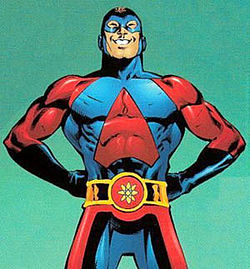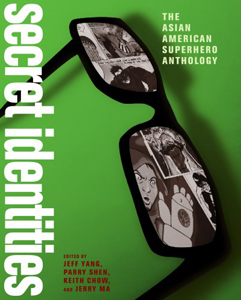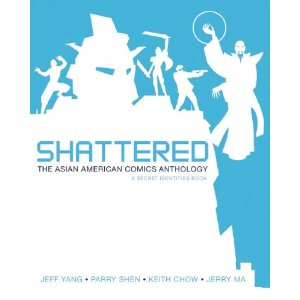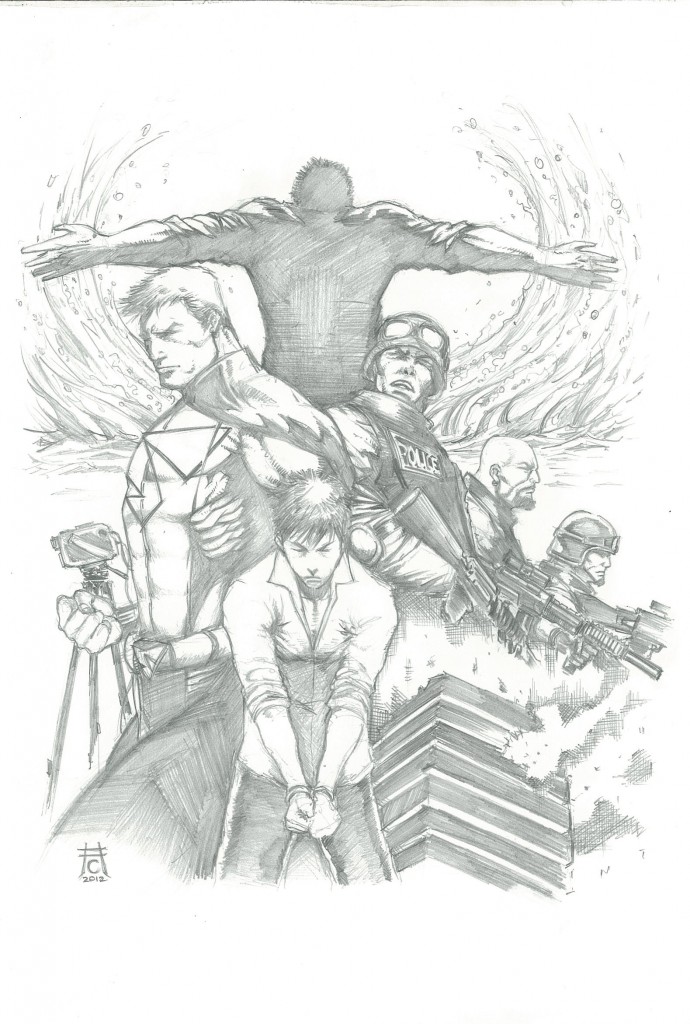For me, comic books aren’t mere entertainment.
As a kid (and still today), I was fascinated by superheroes and their stories. I was a fan of Superman, Batman, and the X-men. Although some of it was basic glee at following the tales of men and women fighting crime in brightly-coloured tights, I think part of my fascination with comic books was my identification with the superheroes in their pages. To me, that is the strength of the comic book medium: they aren’t just childish fantasy. Comic books tell stories of characters that serve as archetypes of human emotion and experience, and when comic books are considered in that context, one can find them capable of highly nuanced, fascinating, and overwhelmingly mature commentary on humanity and human nature.
Thus, I think the best comic book characters are those that speak to universal experiences. Superman isn’t just a Man of Steel; he is an immigrant whom I find most compelling as Clark Kent, an adopted alien trying to fit in among men. Batman isn’t merely a man dressed in a giant Bat-suit; his story speaks to the fragility of life, the relationship between grief and madness, and how the human mind can (or cannot) walk the tightrope between sanity and sociopathy. The X-men are, and were conceived as, a commentary on the civil rights movement. While most comic book characters maintain their popularity because of some ill-defined “cool factor” that render them little more than “good guys in tights”, the most enduring characters are those who have transcended to become a symbol that speaks to particular facets of the human experience.

The one weakness of comic books is that, for so long, they have been written by White men for predominantly White male readers, and thus there is a lack a diversity in characters that speak to the experiences of non-White, non-male readers. Many female characters suffer from what feminist writer Laura Mulvey coined as “to-be-looked-at-ness”; that is, they are primarily written in a voyeuristic, rather than a narrative or humanized, light. Female characters are rarely written in a manner that encourages the reader to identify with them, or to perceive the story through their eyes; instead female superheroes (particularly those in the Golden and Silver Age of comics) are typically mere props to satisfy the male gaze — and often stereotypical ones, at that.
A similar problem (though without a catchy air-quote term) occurs with characters of colour: when Black, Latino, Native or Asian American characters are included at all, they are typically written from a superficial, foreign, almost tokenized place that rarely feels authentic to the actual experiences of the community they purport to represent. That is why, I think, that the few characters that do manage to, even marginally, “get it right” become noticeably popular in communities of colour: for example, Jubilee who was among the first purely Asian-American female character to be incorporated as a head-lining superhero; or John Stewart, the “Black Green Lantern” whose recent repopularization (credited in large part to the efforts by Dwayne McDuffy on the Justice League Unlimited cartoon show) as a multi-faceted African American superhero transcends his earlier roots as a stand-in for 1970’s urban America. We — comic book readers of colour — identify with these characters because they both symbolize (and thereby acknowledge), as well as contribute to, the collective discussion of our unique experiences as minorities in America. And even in these cases, these characters often still feel strangely inauthentic because they are typically (at least in the case of characters like Jubilee) still written from the perspective of White writers with limited experience.
Several years ago, I had a chance to think more carefully on this subject when I wrote about DC’s decision to have Korean American character Ryan Choi, assume the mantle of The Atom. At the time, this was a remarkable move because this was the first time in recent memory that a bonafide Asian American character was assuming such a high-profile (Justice League affiliated) superhero identity, and receiving his own dedicated title, to boot.

I reviewed the first issue of “All-New Atom” which introduced Ryan Choi and a cast of secondary characters, but noted that the book (which was written by the prolific Gail Simone) suffered from the same cultural inauthenticity that plagued other Asian American superhero characters. There was something off about Ryan Choi — the way he spoke about his Asian-ness in tokenism rather than from a place of membership, the way his speech was too conspicuously peppered with Asian cultural references that fail to represent how most Asian Americans actually relate with our racial and cultural identity — that resulted in Choi falling far short of the iconic mark he could have set for Asian American fanboys and fangirls. I remember, in particular, one joke that Ryan Choi made about fortune cookies in his inaugural issue that almost screamed “I look Asian American, yet I speaks words that were not written by an Asian American”. In the end, I felt Ryan Choi was more caricature than character, albeit unintentionally.
To my surprise, Gail Simone came to my blog in defense of her writing of Ryan Choi. After a busy (and heated) public exchange in my blog’s comments section, Simone later contacted me privately, asking me to collaborate with her by email to conceive of an authentic-feeling Asian American female character and colleague for Ryan, who might serve as a professional rival and maybe eventually as a love interest.
As you can expect, I was excited and floored by the offer. Simone and I exchanged some very brief ideas about an Asian American female character that Simone might bring to life in the world of Ryan Choi’s Ivy University. In the meanwhile, I was asked not to say anything publicly (for obvious reasons). However, shortly thereafter, Simone contacted me to let me know that there wasn’t going to be a future for the All-New Atom title, and anyways, she was moving on to Secret Six; and so, any possibility of fleshing out Ryan Choi as more Asian American, and to include a multi-dimensional Asian American female pro-/antagonist fell by the wayside.
Nonetheless, this brief experience was enough to get my mental gears whirring on ideas for how to write comic books from an Asian American perspective, and I was more than ever disappointed that there weren’t more opportunities for people of colour to translate our experiences into the pages of comic books in the form of compelling, and interesting, superheroes of colour.
And then, enter Secret Identities.

Unfortunately, I missed the submission deadline to participate in the first volume of Secret Identities. However, when I got a chance to interview the editors — the unstoppable force that is Jeff Yang, Keith Chow, Parry Shen and, Jerry Ma — I confessed that I was already putting together my submission package for volume two (and that there had better be a sequel!). A couple of years later, when the editors were able to finalize the magic that is involved in getting a book like this greenlit (and by “magic”, I mean “indescribable headache, heartache, and grief”), I was probably one of the first story pitch submissions that they received for volume 2 of Secret Identities, now minimalist-ly named “SHATTERED” — a book that delves into the Asian American experience specifically as it relates to the comic book supervillain.

The story I’ve written for SHATTERED is called “Push”. It documents the events following the arrest of Leland Hei, a former college student whose rage has twisted him into a brilliant and manipulative villain who has pitted himself against the popular, musclebound superhero, the Standard.
In truth, Leland — or more specifically, his superpower — was an idea I’d been playing with since my e-mail exchanges with Gail Simone. I had even originally envisioned adapting Leland as my superhero submission for the first volume of Secret Identities. I thought he might make a pretty cool superhero. However, as I further developed the character around what I felt his superpower really symbolized, I realized that Leland could really only be a supervillain. More specifically, I realized that Leland was a character who might (I hoped) personify some of the anger and bitterness that I think might reside deep down in many of us (albeit far better controlled), but which has bubbled to the surface in this character. Writing Leland was interesting for me, because as much as he is a villain, I felt like I deeply identified with him and his motivations.
I can’t, and don’t want to, give away more about Leland and the story “Push”. But, it was a particular thrill when Leland, who had been little more than an idea kicking around in my head for the last several years, was brought to life by the incredible, breathtaking pencils of Ace Continuado.

In short, the experience of writing for “SHATTERED” has been incredibly gratifying for me. Already a diehard fangirl, I’ve developed a new appreciation for comic book writers and for the artform that is comic books. Writing for the comic book page is not easy. In fact, it’s almost completely foreign relative to the prose-writing most of us are used to (in comics, you have to think about the visuals in storyboard form as you are writing). Further, I came to realize that comic book writers are at their best when coupled with a good editor (which, to his credit, Jeff Yang performed beautifully as for all of the stories collected together in this gigantic anthology); comics must convey dense story-telling in what amounts to a very tiny amount of space shared by both art and dialogue, and an editor’s red pen is almost essential to accomplish this. But I think going through this experience really helped solidify my appreciation for this genre and what it’s capable of.
As I said above, the early draft of “SHATTERED” that I was privileged to take a peek at was breath-taking in both the quality of its writing and its art. I’m almost loathe to say it (because I don’t want it taken the wrong way) but this book is head and shoulders above volume 1 of Secret Identities in terms of ambition, execution and sophistication. I can basically summarize my experience participating in this book with the following sentiment: I am deeply honoured and thankful to have had the opportunity to be involved. There are so many Asian American stories that have already been told through the Secret Identities anthologies, and yet, I think there are still so many that are still waiting to be told.
Even if you’re not Asian American, or a fanboy/fangirl of the comic book medium, I think “SHATTERED” is going to be a worthy addition to your bookcase. And I don’t just say that because I’m in it; I say it despite the fact that I’m in it.
The book drops November 6th in a bookstore or comic book store near you. Be there or be Aquaman.
And, hey, editors: when’s Volume 3?
Related: SHATTERED Blog Carnival Round-Up
